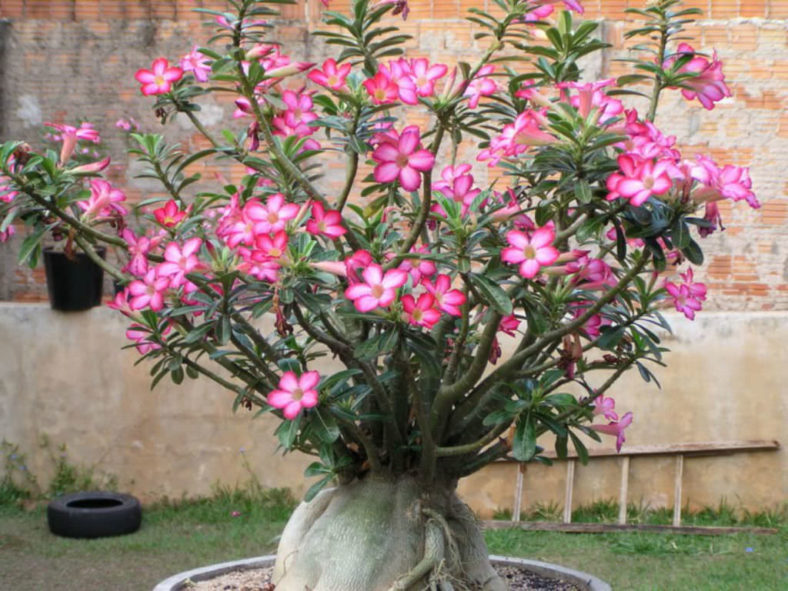Suppose you are growing Adenium obesum, commonly known as Desert Rose. In that case, you probably know that it has an unusual appearance with a thick, fleshy stem called a caudex that can become somewhat grotesque as it enlarges. Its name comes from its desert-like native habitat and colorful, showy flowers resembling small roses. Usually easy to grow when given the right conditions, leaves on a Desert Rose might turn yellow and start to fall. This can stem from regular changes as the year cycles through, or it might signal a problem that needs to be addressed.
A Natural Cycle
A Desert Rose is sensitive to frost but can grow outdoors year-round in USDA Plant Hardiness Zones 10a through 12b. It also does well as a potted plant in colder regions, either kept indoors as a year-round houseplant or grown outdoors in summer and overwintered indoors.
Whether an outdoor plant in a warm winter area or a houseplant, the Desert Rose typically continues to grow throughout the year, so its leaves should remain green if it is healthy and problem-free. However, in cooler regions where nighttime temperatures range from 39°F to 46°F (4°C to 8°C) and increase to 60°F to 64°F (15.5°C to 18°C) during the day, a Desert Rose behaves like a deciduous plant, with its leaves gradually turning yellow and falling off. You can prevent a potted plant from losing leaves by moving it indoors before the air cools in the fall. If you grow the plant outdoors year-round and it becomes dormant in the fall, it should produce new growth as soon as the air warms in the spring.

Possible Pests
A Desert Rose might attract several pests that can affect its leaves, causing them to be yellow and eventually dry up.
These include mealybugs and fluffy white insects that feed on the foliage. If you see these insects, destroy each one by touching them with a cotton swab dipped in rubbing alcohol.
Other possible pests include aphids, small greenish insects, and spider mites, which are not readily visible but make web-like coverings on leaves and buds. Both pests feed on plant juices, causing leaves to turn yellow, wilt, and fall off the plant. Use a strong jet of water to dislodge the pests for a mild problem. If the infestation is severe, spray the plant with insecticidal soap diluted at five tablespoons per gallon of water. Repeat the spray every two weeks as needed.
Fungal Problems
If a Desert Rose is grown in overly wet conditions, it might develop fungal stem rot, which usually starts at a stem tip and could also affect leaves on that stem, causing them to turn yellow and then brown. Eventually, the branch darkens or turns yellow and becomes soft, with the problem moving down the stem toward the soil. To save the plant, prune the affected part of the stem back, cutting the soft area into healthy, firm tissue. Disinfect the knife or shears by wiping the blade with rubbing alcohol between each cut to prevent the spreading of the disease.
Source: ehow.com
Links
- Back to genus Adenium
- Succupedia: Browse succulents by Scientific Name, Common Name, Genus, Family, USDA Hardiness Zone, Origin, or cacti by Genus